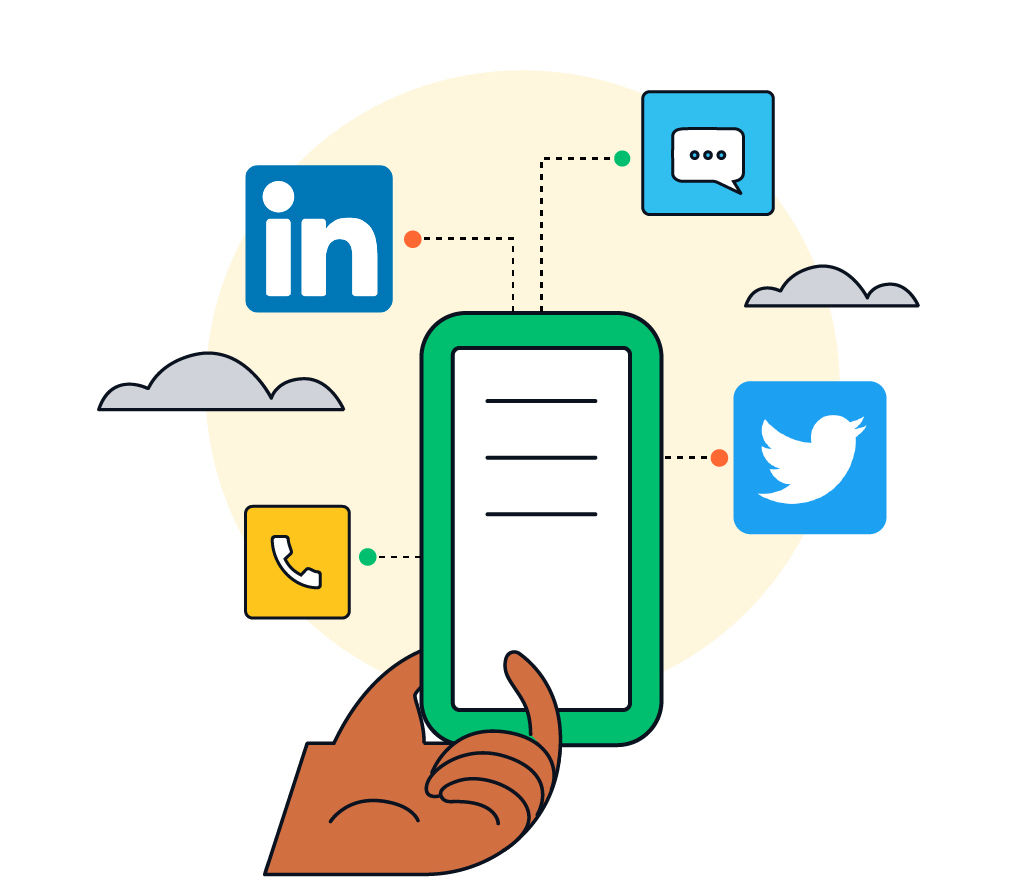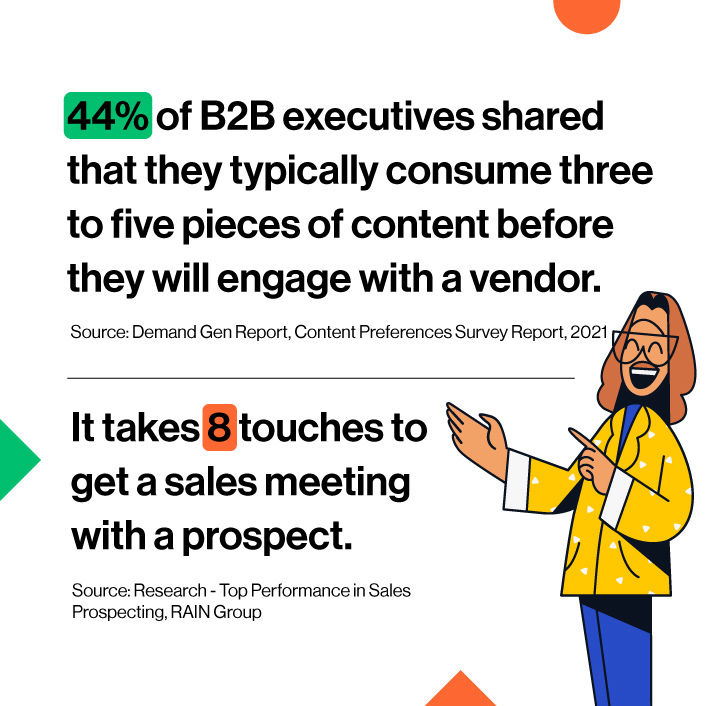Step #3: Provide the right content through the right medium
Consider the last time you tried a new software tool. What did you do when you had questions about the functionality? Did you look up a tutorial on YouTube? Check the company’s help pages? Use a chat feature on their website?
Just like you needed a specific type of content at that moment, potential customers also need unique content to meet them where they are in the customer journey. For sales reps looking to share helpful content through their social channels — whether it is text posts, blogs, audio, or video — they need to be able to convey their message quickly.
“Err on the side of brevity,” David says. “Keep it short. In today’s world of white noise, it’s got to be simple. If you can’t communicate it in under 30 seconds, you should rethink it.”
Sales reps producing their own digital sales content, such as videos for social media, should also prioritize mobile optimization. Over half of web traffic as of early 2021 is from mobile devices.
Lastly, make sure to examine the past behavior of your audience and see what content was successful. Pay attention to the feedback, or signal, that your audience provides based on their engagement (comments, likes, shares, responses, etc.).
“Once you can determine that signal and act on that signal, you’re going to get the flywheel turning that allows you to make better decisions,” Andrew says.
Step #4: Leverage employees’ personal brands
Think of the biggest sale your team has made this year. How often did your sales team meet with the customer? Did the customer ask a lot of questions? How much effort did it take your sales team to build the necessary trust with the customer?
LinkedIn’s State of Sales Report 2020 brought eye-opening discoveries about the importance of trust in sales. In the report, only 32% of potential customers described the sales profession in general as trustworthy. Compare that to the fact that 88% of potential customers consider the salespeople they decided to buy from to be trusted advisors.
Salespeople can leverage personal brands as a way to build trust with prospects, since “people buy from people,” as Andrew says.
Here are three key principles for your team to follow when building their personal brands:
Consistently showing up in the locations where your prospects spend time is key. This can be a specific social media platform, an online forum, or other locations. “As simple as it sounds, it’s the hardest thing to do,” Andrew says. “Show up every day. If you have people’s attention, you can sell your product.”
Show personality. Building a personal brand also means building a brand unique to yourself instead of just sharing your company’s social posts. “The rule of thumb I try to follow is 50/50, '' David says. “I want to be a good corporate citizen and amplify my company’s brand. But I think you need to spend at least 50%, probably more, on developing and amplifying your own personal engagement with your network—growing your network, joining different groups.”
Sales reps also need to understand who their audience is. For example, if you’re looking to build your personal brand to increase digital sales, then you don’t need to promote sales thought leadership. Instead, your content should fit the industry trends and challenges affecting potential customers, Andrew suggests.
Step #5: Take advantage of AI-powered insights
Prospecting. Sending messages to new customers. Predicting the outcome of a potential sale. These are just some of the AI-driven digital sales capabilities available to sales teams.
AI digital sales tools can range from simply providing insights to automating tasks that hold up the team’s time. When implementing these digital sales tools, there are two components: the model, which performs the job to be done, and the training data, which teaches the model how to operate. For sales teams looking to implement AI, David says the training data is an integral part.
“The value is in, how do I capture the tacit knowledge of the sales teams?” he says. “How do I take a seller that’s got 15 years experience in the field — in the top 20% of the sales organization that’s driving 80% of revenue — and how do I scale that tacit knowledge in an efficient way?”
Responses from experienced sales reps about their touchpoints with customers (via the website, owned media, LinkedIn) should be used to train any AI models being brought onboard to benefit greener reps, David says.
To do this, you don’t have to build a model from scratch. Instead, look for no-code or out-of-the-box tools that map back to your team’s digital sales struggles.
An example of this would be an AI tool such as Freddy AI that can use past wins and losses to determine which prospects are most likely to become customers. A tool like this can help sales teams to better prioritize their prospects and leads.
Using a tool that can capture the signals that are driving the digital sales pipeline will provide insights you can’t typically gain from looking at a spreadsheet.





